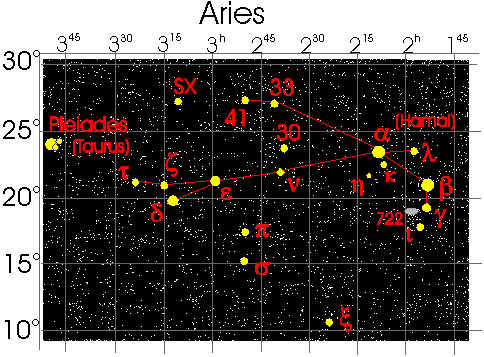

Robert Waech asks:
What do you know about the relationship of the stars in Starry Night to the actual configuration of the stars in the night sky. Is there any controversy on this subject?
Jose Navarro comments: "The distribution of the stars in the painting Starry Night corresponds to the constelation that was over Provence in that period of the year. This comment appeared in an article published in internet, made by an American astronomic observatory. Sorry not to give the URL because I read it through a link of other web page, and though I have intended repeatedly to connect now, I have not got any answer.
This realism is not strange in Van Gogh, for instance, in the painting "Almond Blossom" (Saint Remy 1890) the evolution of the bud flowers, from winter bud up to full flower, is absolutely real, is an exactly copy of the nature, and this fact was agronomicaly explained about sixty years after Van Gogh made his canvas.
Vincent used forms and colours in a personal manner but he always started from reality."
Larry Cox writes: "hey dude! i am no art expert but in reading through a recent national geographic article on vincent, i see that the stars in his 'starry night' is probably the constellation aries and the planet venus (the brightest starlike object). in his painting, there is an obvious crescent quality to the brightest 'star'. venus was most likely in a crescent phase and it occurred to me that vincent may have perceived the crescent shape of venus even though it is purportedly indiscernable as such by the naked eye. i have had visual experiences in childhood of astronomical phenomena that are purported to have been impossible via unaided human eyesight. i think vincent perceived the crescent shape of venus (perhaps subliminally) and that i'm the first to recognize this. what do you think?"
In a later submission, Larry Cox adds: "According to national geographic, this painting was done while vince was in an asylum with a window through which the constellation aries and the planet venus would have appeared as in starry night. Venus is the brightest starlike object by far in the sky and i can imagine the way it may have beaconed to a visually gifted genius on the edge of sanity. Do you know whether vince had perfect eyesight?"
Jose Navarro then posts an additional comment:
"I have just found a new reference about "Starry Night". The painting, well known and fequently associated to Van Gogh´s madness, is not the result of a strange dream of the painter. Boime1 says that the painting is influenced by the interest of Vincent about the astronomic research of that time.
A reconstruction of the sky made by Griffith Park Observatory has been used to prove that Van Gogh painted the exact position of stars and planets on the canvas: the moon, Venus and the constellation Aries. (This was his horoscope).
The spiral currents are imagined, but he could reproduce them because he knew that these currents run through the universe though we couldn't see them.
Astronomy, in the decade of 1880 awoke a great interest among people."
 Jose also adds:
"A few days ago I received an e-mail from an astronomer of the University of
Minnesota and told me that he thought there was no relation between tha canvas and the
constellation over La Provence. I have found these maps of the Aries Constellation,
and I see with a good will, that the stars of the canvas could be a, b, 33, 41, Sx; 30 in the
center, and e, s, down. Plus Venus and the moon." Jose also adds:
"A few days ago I received an e-mail from an astronomer of the University of
Minnesota and told me that he thought there was no relation between tha canvas and the
constellation over La Provence. I have found these maps of the Aries Constellation,
and I see with a good will, that the stars of the canvas could be a, b, 33, 41, Sx; 30 in the
center, and e, s, down. Plus Venus and the moon."
A side by side comparison may offer some interesting insights. |
Cathal Murray comments:
I proposed the following idea to Professor A. Boime of UCLA nearly 20 years ago and have not heard back from him, so I'm now posting it here.
The stars are arranged as a map of the southern coast of France, from about Marseille to Spain.
The swirl is the Mediterranean Sea.
The moon, naturally, is Saint-Rémy.
The 7 stars on the "mainland" of France, moving right to left from the moon, might be major cities
The Cypress Tree might be the border of France Spain, but I don't think so.
The bottom half of the sky seems to be the Netherlands, with the swirl again representing water, this time the Atlantic.
The large white star at the bottom is his home town Groot-Zundert. The star above that, in the pointy peninsula(dark paint), is Amsterdam. The green and yellow star just to the left of the cypress is The Hague (same colors as the flag of The Hague)
Now, all this might seem a little far-fetched if it was not far a letter Van Gough wrote to his brother at about the same time as he painted
"Why, I ask myself, shouldn't the shining dots of the sky be as accessible as the black dots on the map of France?"
Seems pretty clear to me.
<

 Return to Van Gogh Online Forum page
Return to Van Gogh Online Forum page
 Return to main Van Gogh Gallery page
Return to main Van Gogh Gallery page